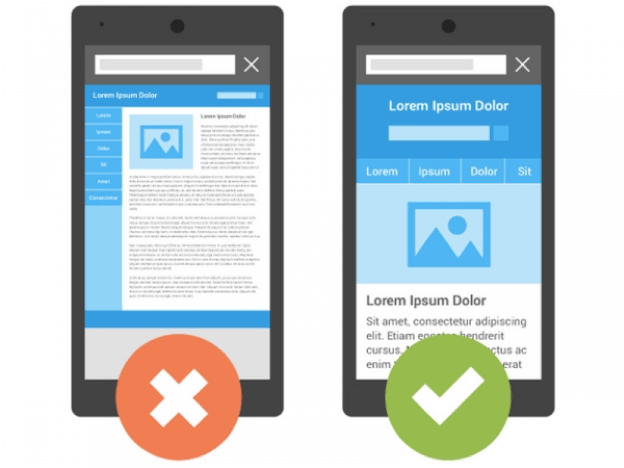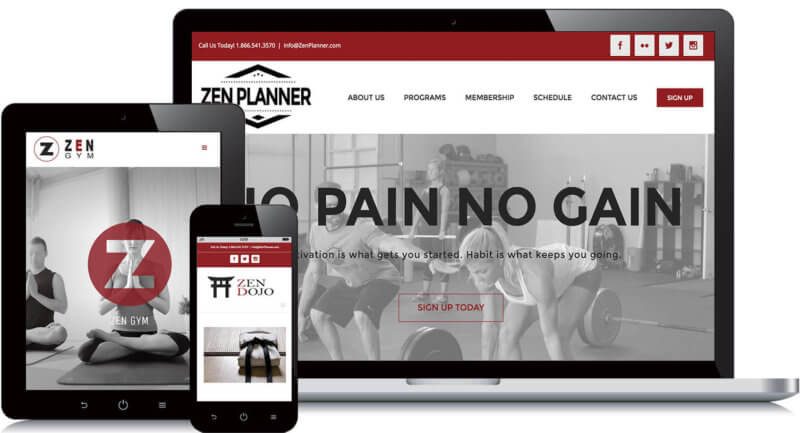The Importance of Responsive Gym Web Design


These days, gym websites must be mobile-friendly. Sure, this isn’t new news, but many fitness business owners still try to get by with gym websites that don’t deliver readable content to a large majority of their prospects. Of course, this oversight is understandable. It’s hard to keep up with the rapid changes going on in the world of gym web design and development. To help you sort through this issue, we’ll dive into the key reasons why you must have a mobile-friendly gym website.
We Live in a Mobile World
As you know, we can’t live without our mobile devices. It’s estimated that people spend around three hours a day using a smart phone. With such heavy mobile use, it’s not surprising that mobile searches far outpace searches on all other devices combined. And it’s not just about using a search engine to find a business. We also use our mobile devices to research a product or service before we buy. In fact, 92% of people who researched a purchase on their mobile device went on to buy it. That’s a staggering statistic that shows the correlation between having a phone in hand and making a purchase.
Discover what your website must have in our latest website checklist!
So what happens if someone with a mobile device does a search and lands on your gym website… but your site isn’t using responsive gym web design? Well, the user is stuck pinching and pulling your content around their screen to try and read it. Some content gets cut off in the middle of it, and some won’t display at all. When that happens, the user will probably get frustrated and close out of your site, moving down to the next business in the search results. In other words, you’ve lost them.
Google Prioritizes Mobile-Friendly Websites
But readability isn’t the only issue. Early in 2015, Google started giving mobile-friendly websites in a better position in search results. This means mobile-friendly sites are listed at the top of the search rankings, and sites that aren’t compatible are listed much lower on the page.

Photo credit: Digi-Tips
These points show that businesses cannot afford to continue using a gym website that’s not mobile-friendly. If they try to get by with one, the Google penalty and loss of leads due to non-readable content will cost them a significant amount of lost revenue. But does this mean business owners can forget about desktop users and only worry about delivering mobile compatible content?
No. You need a gym website that’s responsive for all devices.
Your gym website must be able to recognize the type of device being used and resize itself accordingly to provide the best viewing experience. This helps you get found in a Google search and makes it so that people can read your content on any device. It also keeps a reader’s experience the same when they move back and forth from their mobile to their desktop. (Like when they check your class schedule on their desktop computer while at work and then again on their mobile device)

Ensuring you utilize responsive gym web design is one of the best things you can do for your business right now. Learn more about what else your gym website needs in our checklist, 10 Things Your Fitness Website Must Have.

I’m Coach Kelli, a devoted CrossFit gym owner with 15 years of experience managing my facility, along with owning yoga studios and wellness centers. Beyond the fitness world, I have a passion for cooking, cherish moments with my children and family, and find joy in spending time outside. Having experienced the highs and lows, I’m dedicated to leveraging my expertise to help you grow and succeed on your fitness journey.

I’m Coach Kelli, a devoted CrossFit gym owner with 15 years of experience managing my facility, along with owning yoga studios and wellness centers. Beyond the fitness world, I have a passion for cooking, cherish moments with my children and family, and find joy in spending time outside. Having experienced the highs and lows, I’m dedicated to leveraging my expertise to help you grow and succeed on your fitness journey.








